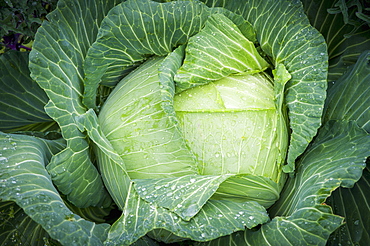Recent searches
Loading...
1366-1180 - Europe, Netherlands, South Holland, Lisse. April 26, 2022. Sculpture Levenboom, Tree of Life, by Jo Naus and Marjan Tabak.
832-398436 - background rain drops close up. High resolution photo
1350-6608 - Mexican aztec dress gods at Grand Palladium White Sand Resort and Spa in Riviera Maya, Yucatan Peninsula, Quintana Roo, Caribbean Coast, Mexico.
Aztec clothing was generally loose fitting and did not completely cover the body. When the Spanish arrived in Mexico, the people were surprised to see them in their full armour, with only their faces exposed.
Aztec clothes were generally made of cotton (which was imported) or ayate fiber, made from the Maguey Cactus (also called the Century Plant or American Aloe). Women would weave the fibers into clothing, a task girls were taught as young teenagers. Because of their vast trading network, the Aztecs were able to make use of a beautiful array of dyes, creating the brilliant
1350-6595 - Mexican aztec dress gods at Grand Palladium White Sand Resort and Spa in Riviera Maya, Yucatan Peninsula, Quintana Roo, Caribbean Coast, Mexico.
Aztec clothing was generally loose fitting and did not completely cover the body. When the Spanish arrived in Mexico, the people were surprised to see them in their full armour, with only their faces exposed.
Aztec clothes were generally made of cotton (which was imported) or ayate fiber, made from the Maguey Cactus (also called the Century Plant or American Aloe). Women would weave the fibers into clothing, a task girls were taught as young teenagers. Because of their vast trading network, the Aztecs were able to make use of a beautiful array of dyes, creating the brilliant
832-397413 - Life wording with the help of a fake flower in view
832-397113 - Life wording with the help of a fake flower in view
832-396690 - Theme Decoration, Still life with withered hydrangea in clay vase next to wooden balls, Studio shot, Symbol photo
832-396689 - Still life with single tulip in glass vase, studio shot, symbol photo
1350-5476 - foxglove, common foxglove, purple foxglove or lady's glove (Digitalis purpurea). Collados del Ason Natural Park. Cantabria, Spain, Europe
1350-5477 - foxglove, common foxglove, purple foxglove or lady's glove (Digitalis purpurea). Collados del Ason Natural Park. Cantabria, Spain, Europe
746-90120 - Farmer touching his crop with his hand, Italy, Europe
746-90121 - A farmer sprinkles his plants with soil, Italy, Europe
1350-4382 - Traditional S?mi arts and crafts. Inside the home of Tuula Airamo, a S?mi descendant, and Reindeer farmer, by Muttus Lake. Inari, Lapland, Finland
1116-51532 - A young family posing for a family portrait outdoors in their front yard and the mother is a paraplegic in a wheelchair; Edmonton, Alberta, Canada
1116-51534 - A young family posing for a family portrait outdoors in their front yard and the mother is a paraplegic in a wheelchair; Edmonton, Alberta, Canada
832-393320 - Wild geranium, Geranium maculatum, violet flower on black background, still life photography, Poland, Europe
832-393321 - Wild geranium, Geranium maculatum, violet flower on black background, still life photography, Poland, Europe
1350-3488 - Reedbed and river. Alloz reservoir. Navarre, Spain, Europe
1350-2443 - Brown algae, Sargassum horneri and Undaria pinnatifida, Chusan, Ulleungdo, South Korea (East Sea or Sea of Japan).
1350-3441 - Sunflowers crop. Sorlada village and de San Gregorio monastry. Tierra Estella. Navarre, Spain, Europe
1350-3442 - Cyclist and sunflowers crop, Sorlada village and San Gregorio monastry. Tierra Estella. Navarre, Spain, Europe
1350-3487 - Reedbed and river. Alloz reservoir. Navarre, Spain, Europe
1350-3443 - Sunflowers crop. Sorlada village and de San Gregorio monastry. Tierra Estella. Navarre, Spain, Europe
1350-2236 - Red Tower Ginger; Spiral Ginger; Costus comosus in Moorea, French Polynesia, Society Islands, South Pacific.
1116-49727 - A young couple standing in front of a waterfall on private land on the island of Kauai, Kauai, Hawaii, United States of America
832-391092 - Still life with vegetables, various carrots, fennel and beetroot
765-1306 - Damaraland, Kunene Region, Namibia, Africa
1116-46823 - A diver feeds a green sea turtle (Chelonia mydas), an endangered species, at Sea Life Park's Underwater Sea Trek Adventure in their big tank, Oahu, Hawaii, United States of America
1116-46132 - Infant Boy Playing With Little Pigs On A Farm In Northeast Iowa In Summertime, Iowa, United States Of America
1116-45202 - Red Ring Life Preserver Hanging On A Wooden Post, Northumberland, England
1116-44671 - A Family Enjoys An Afternoon In The Pool On A Sunny Afternoon, Fountain Valley, California, United States Of America
1116-43752 - Cabbage (Brassica Oleracea) Covered In Dew, Fairbanks, Alaska, United States Of America
1174-5506 - Country Hotel, Antequera, Andalucia, Spain
1218-882 - Village farmers in the Mekong Delta away from the intense city life of Saigon, Vietnam, Indochina, Southeast Asia, Asia
1218-883 - Village farmers in the Mekong Delta away from the intense city life of Saigon, Vietnam, Indochina, Southeast Asia, Asia
1116-41940 - A deck on a lake with a decorative flower pot in the shape of a bicycle, kenora ontario canada
1116-42055 - Pool Side Setting At Dusk With Pool Lights Two Chairs Table And Two Glasses With Lime Wedges, Palm Springs, California, United States of America
832-379954 - Agricultural landscape, green terrace rice fields, Upper Marsyangdi valley, Bahundanda, Lamjung District, Nepal, Asia
832-379956 - Agricultural landscape, women working in green terrace rice fields, in Upper Marsyangdi valley, Bahundanda, Lamjung District, Nepal, Asia
1116-40361 - Mountains And Lake, Lake District, Cumbria, England, United Kingdom
1116-40430 - Row Of Trees In A Field, Yorkshire Dales, England
1116-40405 - Rain Clouds Over Hilly Landscape, Cumbria, England
1178-2808 - Clover Muir Woods National Park California USA
832-373084 - Silver Birch, European Weeping Birch or European White Birch (Betula pendula) leaves
832-367647 - True Lavender (Lavandula angustifolia)
832-369786 - St John's wort, Tipton's Weed, Chase-devil, or Klamath weed (Hypericum perforatum), medicinal plant
832-373239 - Fennel Flower or Black Caraway (Nigella sativa) herbal tea, medicinal tea
832-377865 - Soaptree Yucca (Yucca elata) in dunes, White Sands National Monument, New Mexico, USA, North America
832-377912 - Tufts of grass in the sand of the Libyan Desert, Wadi Awis, Sahara, Libya, North Africa, Africa
832-373085 - Silver Birch, European Weeping Birch or European White Birch (Betula pendula) leaves
832-369787 - St. John's, Tipton's Weed, Chase-devil or Klamath weed (Hypericum perforatum), medicinal plant
832-373114 - Betel Nuts, Pinang Nuts (Areca catechu), medicinal plant, spice
832-373115 - Betel Nuts, Pinang Nuts (Areca catechu), medicinal plant, spice
832-377864 - Soaptree Yucca (Yucca elata) in dunes, White Sands National Monument, New Mexico, USA, North America



































































































